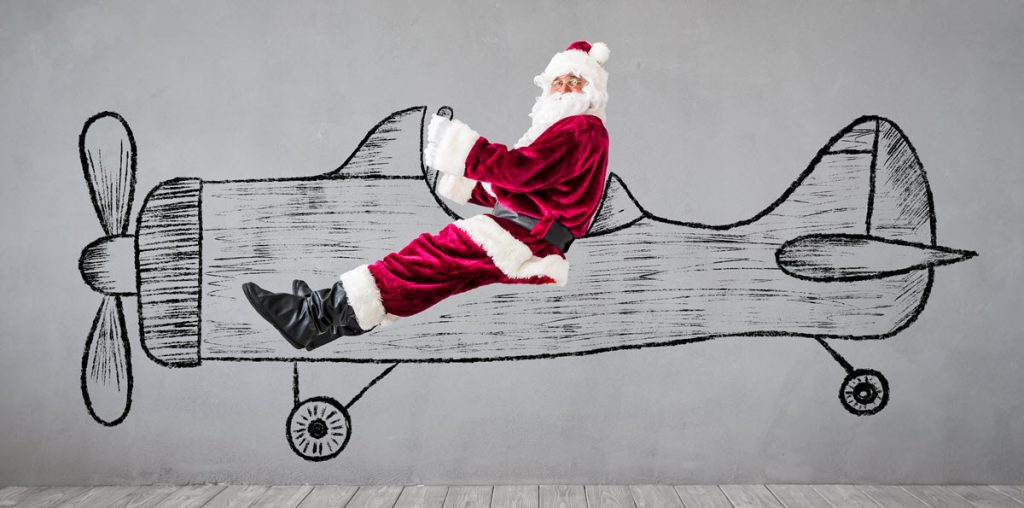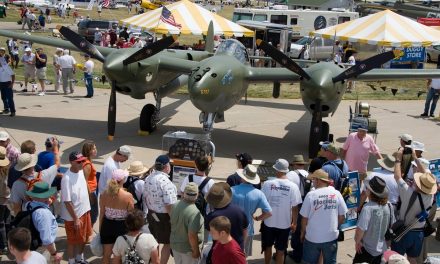
Over the river and through the wood…
By Floyd Allen
As frost gives way to snow and gentle breezes to howling winds, we all look to the skies with a longing in our hearts and an itching in our palms to get our hands on the controls of our planes. Fortunately, late November and late December offer a great reason to brave the elements and fly—the holidays.
“For the most part, the coming of winter is the time that we often put our planes into hibernation and wait for the spring thaw before we take them out again,” said Jason Wolcott, Vice President of GATTS in Manhattan, Kansas. “The holidays, however, are often the exception to the rule.”
“I know that’s true for me,” John Pichitino, owner of Pitch Perfect Aviation in Nevada City, California, shared. “My wife’s folks only live about an hour away by air, so we most frequently do fly to them for the holidays.”
It’s plain to see that there is, in fact, a propensity for an increase in air traffic in the latter part of the year. In fact, according to Mike Ryan, an FAA air traffic control specialist in Phoenix, Arizona, “The two busiest flight days of the year are the Wednesday before and the Sunday after Thanksgiving. And, the days surrounding Christmas aren’t too far behind.”
Mel Johnson, Contract Site Supervisor for the Western Desert District for Raytheon in Phoenix, interjected, “An important issue that probably needs mentioning here is the fact that many general aviation pilots flying at that time are going to places they’ve never been to before.”
With that much traffic in the air, it is especially important that everyone do their part to ensure the airspace is safe for everyone. Our experts agree that the best way of doing this is to make sure that pilots perform their due diligence before departure. Here are a few of the basics:
- Watch the Weather: It’s vital that you constantly monitor weather conditions throughout the course of your trip. Know what the weather is like at the airport you’re leaving and what it’s like at the airport(s) at which you intend to arrive. Precipitation at this time of year can very easily convert into icing conditions.
- Preheat your Plane: The cold, in itself, can be an issue when flying during the holidays. While the ideal situation is to store your plane in a heated hangar, more often than not, such “deluxe accommodations” are a luxury many pilots simply can’t afford. Fortunately, good engine pre-heaters are an economical alternative allowing you to get/keep your oil at a temperature where it is more readily and easily circulated.
- Inspect and Detect: If your plane is stored outside, it’s especially important to make sure that all intakes are clean and open. Check not only for snow and ice buildup, but for holed up varmints as well. And, while it’s always an important checklist item for any time of the year, verify that your avionics are all functioning properly.
- Use Good Judgment: “In addition to making sure that his plane is in tiptop shape for holiday flying, a pilot needs to make sure that he is too,” offered Pichitino. Here, our expert is referring to a pilot’s decision-making process. One “trap” that a pilot might fall into is that, due to the fact he wants to spend as much time with loved ones as possible, he may plan his departure without allowing enough “wiggle room” for postponement due to inclement weather. Feeling the pressure of getting home on time, he may decide to fly in conditions that he normally wouldn’t (and shouldn’t) attempt. It’s imperative that pilots use good judgment at this time of the year, even if it means reporting for work a day late.
Another issue that the pilot must be in control of is making sure that, with the “full load” of family, gifts, and even pets, a proper weight balance is established. This will not only affect the handling of the plane, but its safety as well. Adding to the topic of good vs. bad judgments, Pichitino astutely added: “While I realize this should go without saying, always remember the old adage, ‘Eight hours from bottle to throttle.’”
Communication is Key
“If I’m flying into a busy airport – as most are during the holidays – I’m especially aware of what the air controller has to say,” said Phil Sanders of Triple S Repair in Kingman, Arizona. Our air controller experts wholeheartedly agree and offer some salient advice of their own:
- Advise the controller that you’re unfamiliar with the airport if, in fact, that is the case.
- If possible, arrive at an unfamiliar airport during the day as opposed to at night.
- Evaluate whether or not your requests are appropriate. A request to perform touch-and-gos at Sky Harbor Airport on the day before Thanksgiving is probably not a reasonable request!
- Acquire as much data as possible about the airport before you arrive at the airport.
- “Tie-up” the frequency as little as possible.
- Try to avoid “black hole” communication situations.




